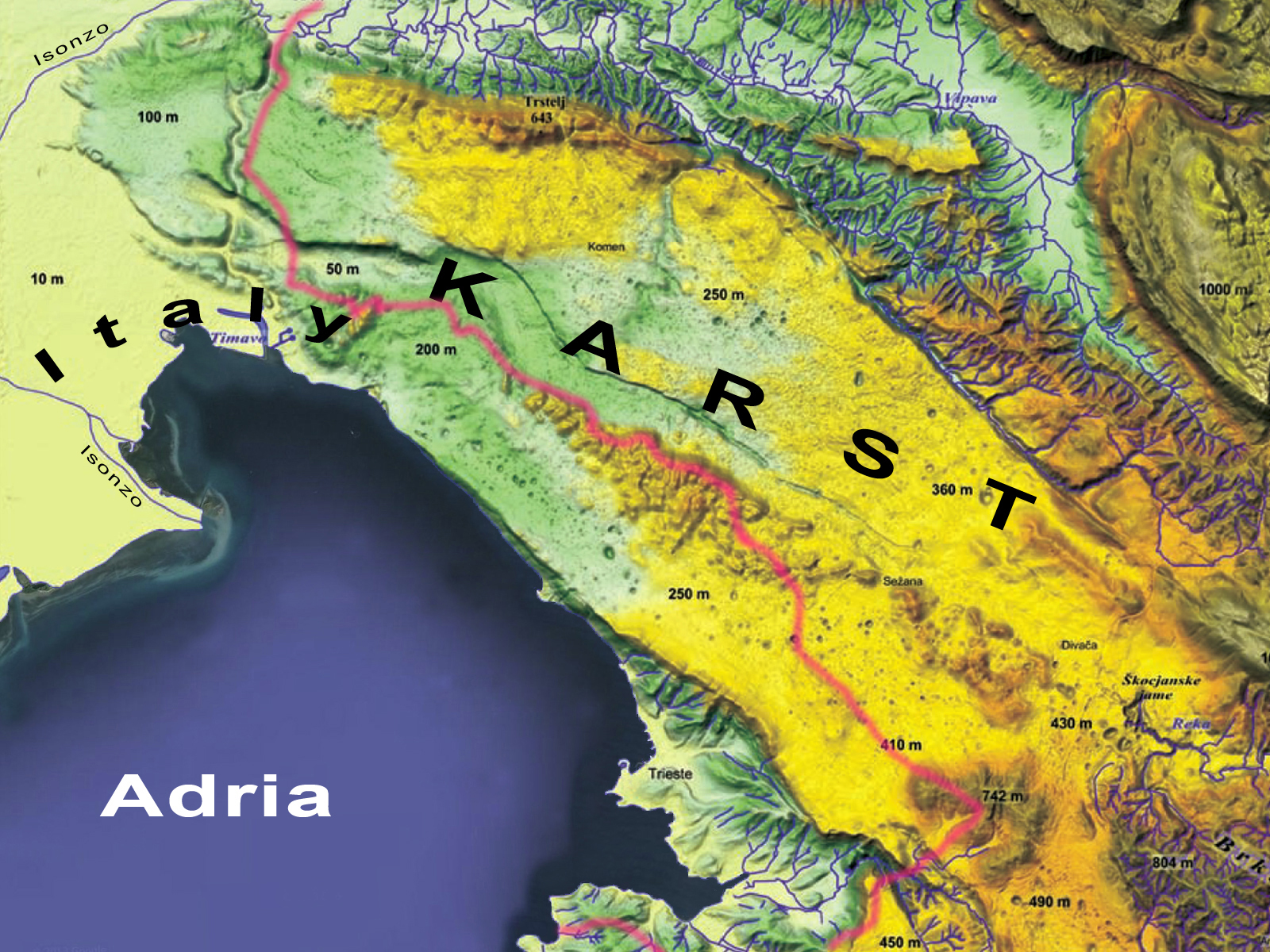2. Natural conditions
The natural conditions and stony terrain of the Kras1 made it difficult to fight there. And so the Austro-Hungarian soldiers were brought at the beginning of the fighting into completely unfamiliar territory. Field blades were worthless for digging in hard limestone. Terrain hollows made by water erosion, called doline, were often the only shelters from observation and the firing of the enemy. The limestone fragments, shredded by artillery shells, multiplied the effect of this fire and caused severe injuries. For this reason, the Austro-Hungarian defenders set up a protective shield by heaping dead soldiers on their shallow trenches. The trenches were dug through hammers and chisels in intervals between battles. It was a great achievement when a soldier managed to deepen the bottom of the trench by 5 centimeters in one night.
The exhaustion of soldiers was also caused by a lack of water, despite the leaking through the limestone subsoil. Thirst became the insurmountable companion of the Isonzo soldier. Basic needs had to be transported to the front during the night by carriers or pack animals, but ammunition and medical supplies took priority. Although Austro-Hungarian General Staff considered helmets as a luxury in the beginning, it was forced to requisition them quickly because of the fatal head injuries from the flying limestone pieces. At the beginning, ineffective dragoon and fire brigade helmets were used, or Italian helmets (which were officially banned) and later in the first year steel helmets.
Karst Plateau

Source:
The battle quickly turned into trench warfare, in which the dense artillery fire of the Austro-Hungarian troops did not give the enemy much chance to approach. As a result, the Italian High Command proceeded with massive artillery attacks that destroyed everything around the edge of the defense, so the battle was prolonged. At the same time, with the increased participation of heavy strength and naval artillery, the destruction increased. After such devastating fire, they set out into a silent area covered with pieces of steel, craters, scree and masses of fallen soldiers. The attackers who managed to penetrate the Austro-Hungarian trenches were stabbed in hand to hand battle, as there was no time to take prisoners. Of the regiments made up of three to four thousand men, after a few days of battle only small groups of fifty to sixty men remained. They then retreated to the queue of waiting reinforcements from the arriving trains and again sent to bloody cuttings.
1 Kras is the name of the karst area extending across the border of southwestern Slovenia and northwestern Italy.
Source:
ČEPELKA, M.: Fronta v Dolomitech 1915-1917, Lysá nad Labem 1997.